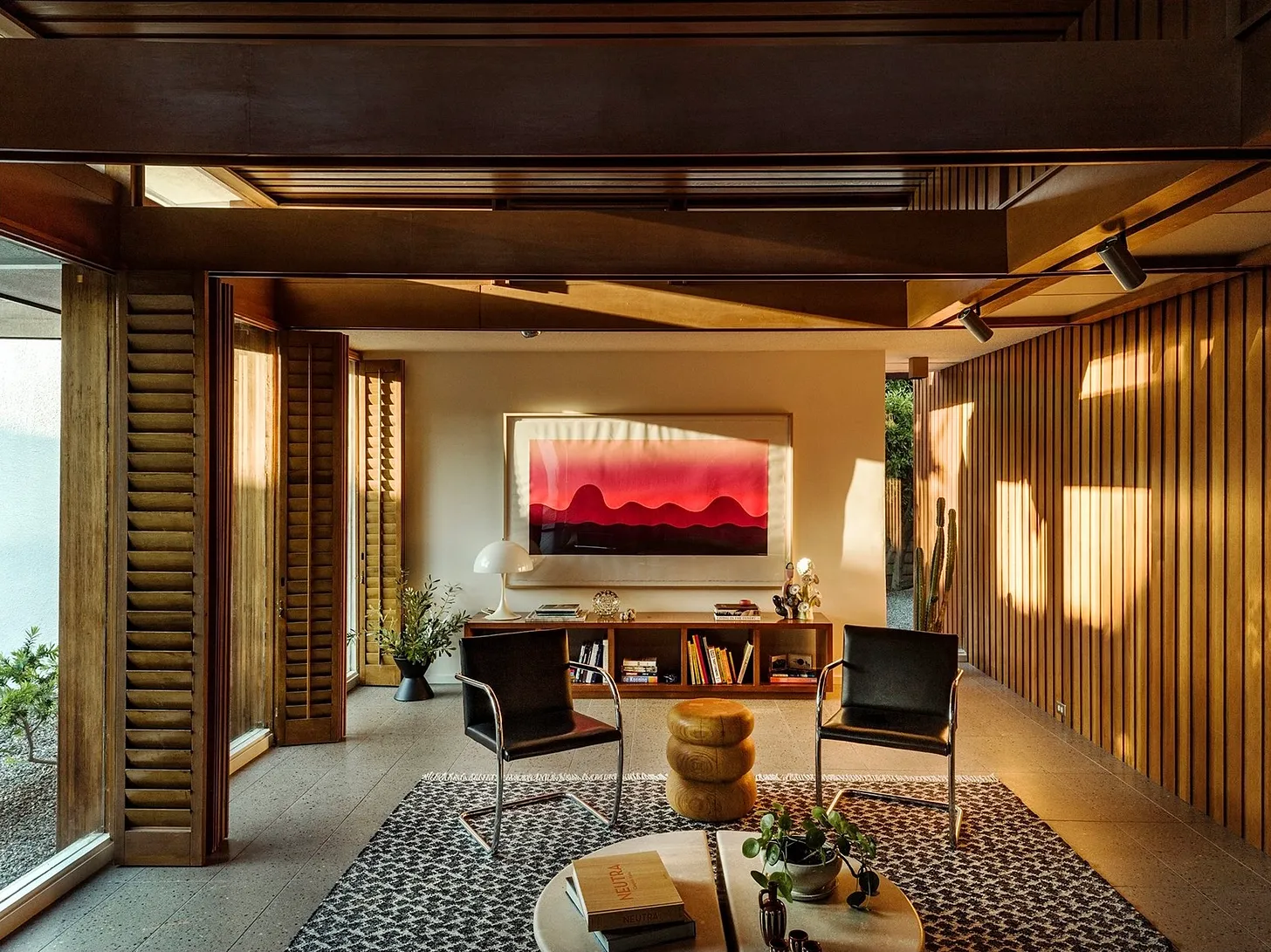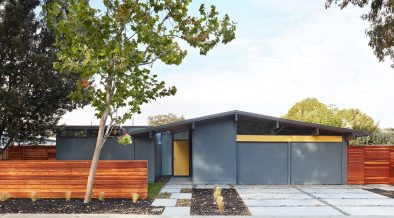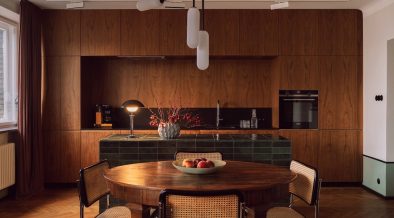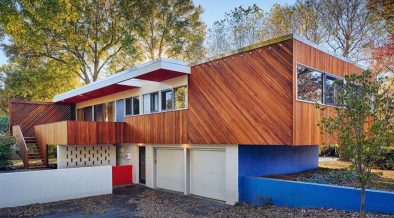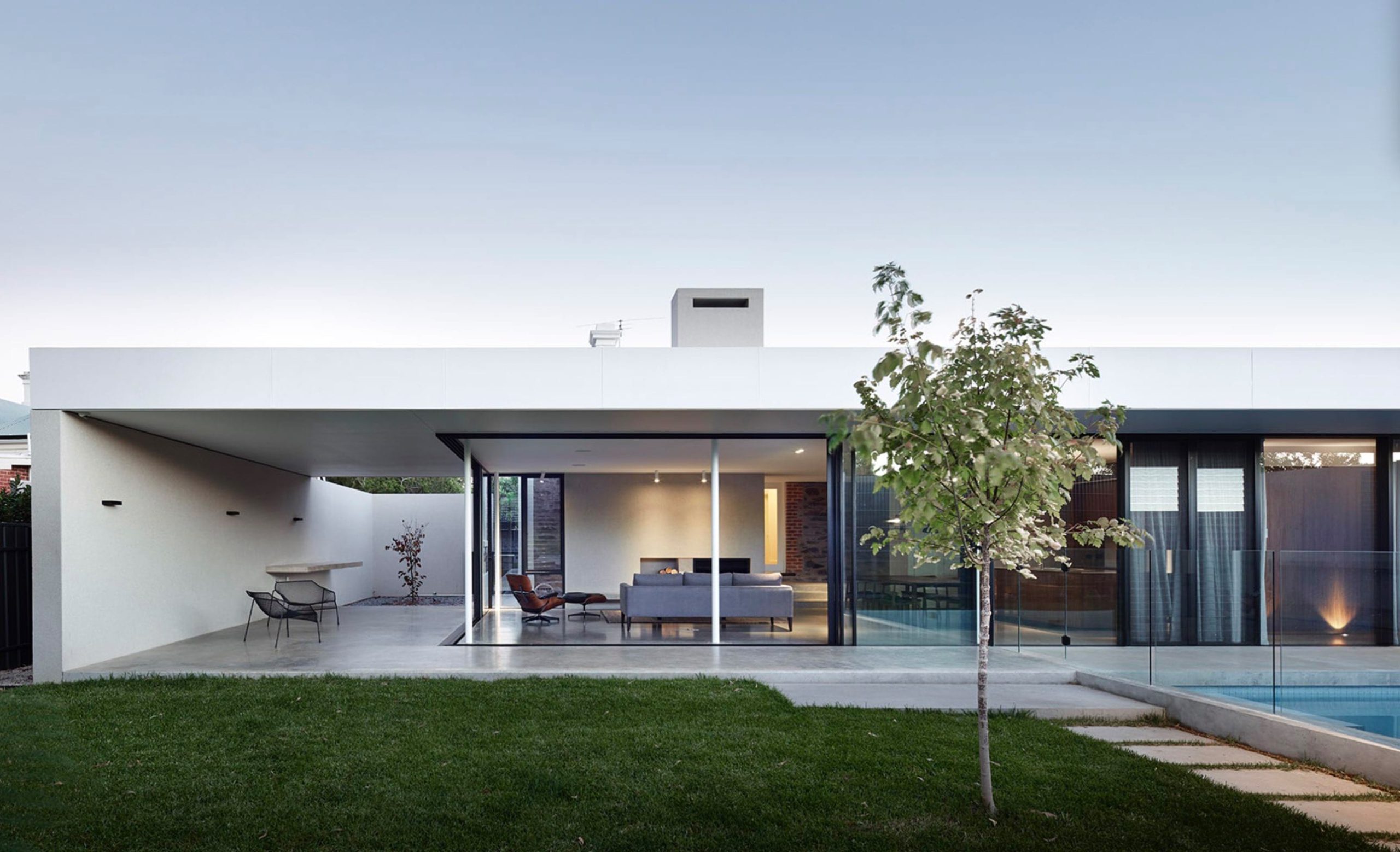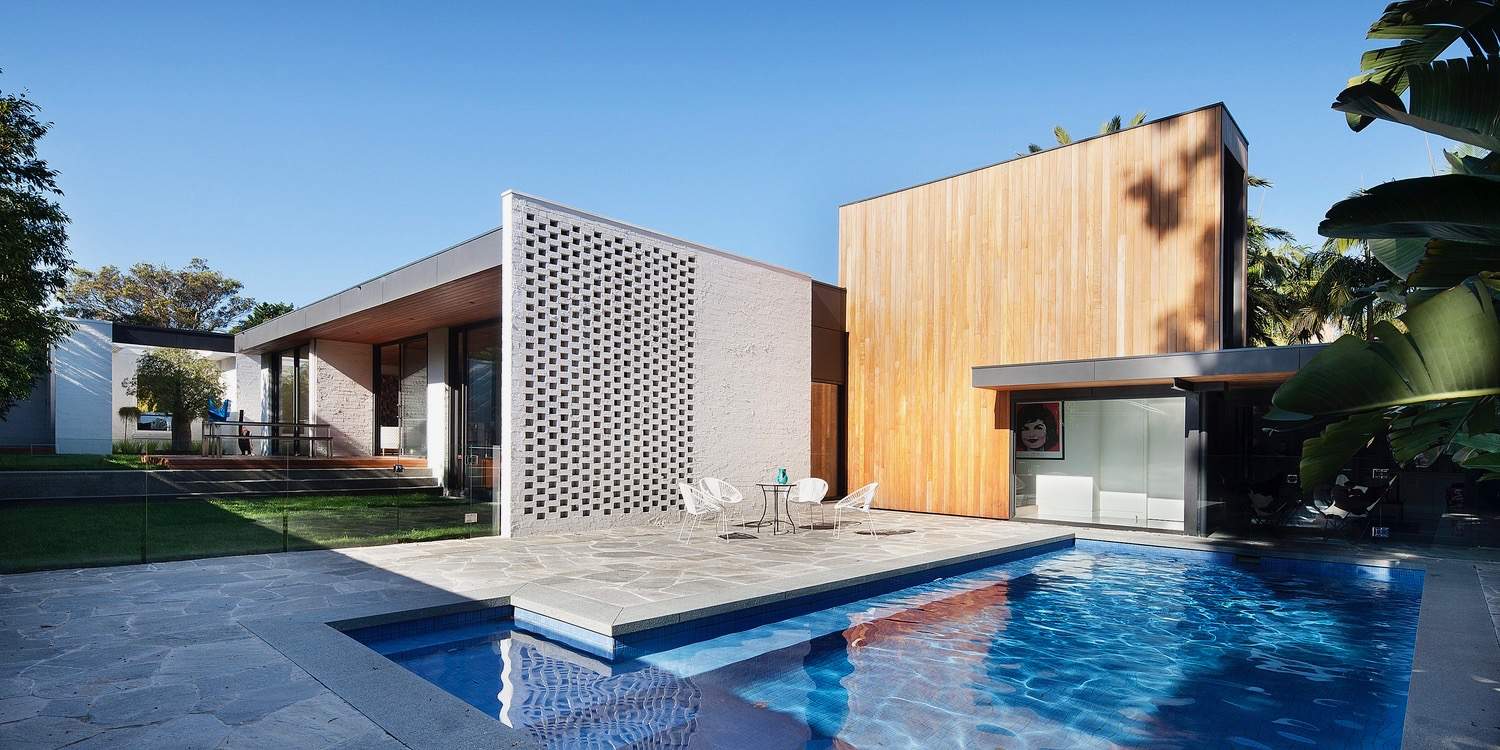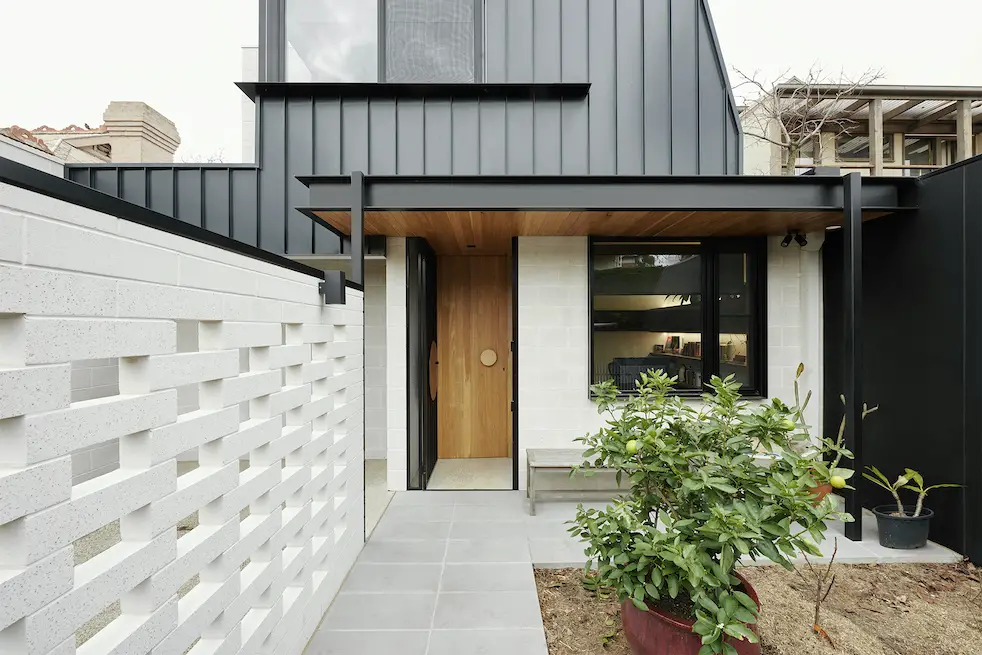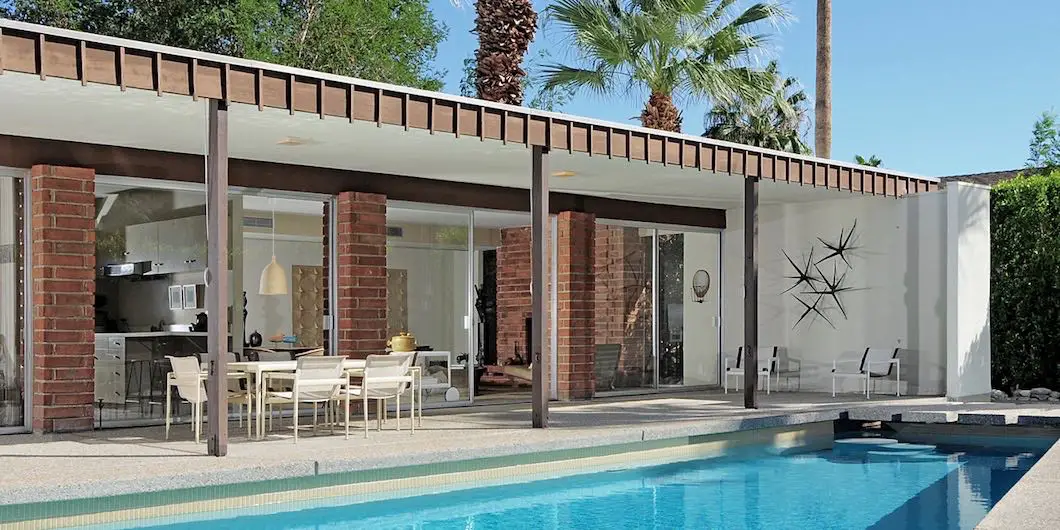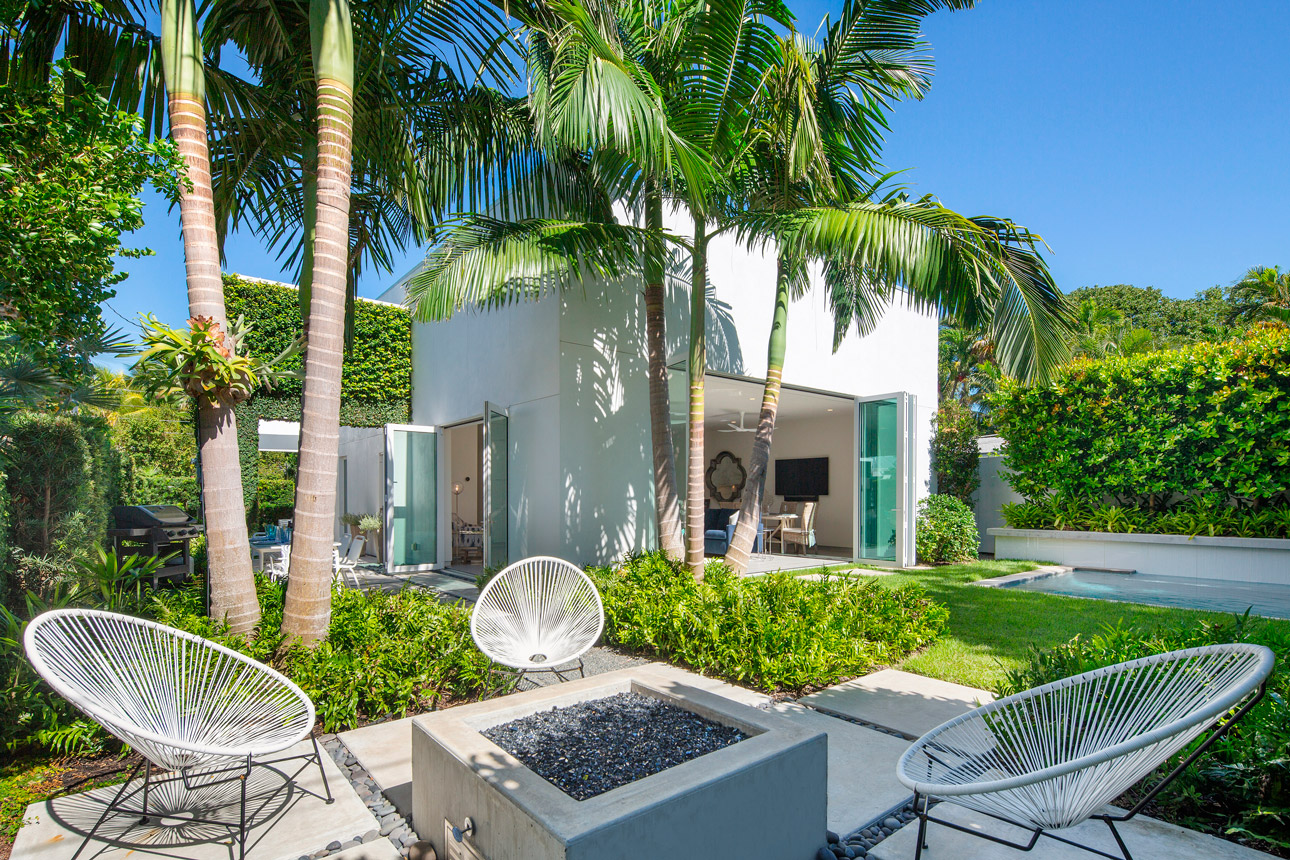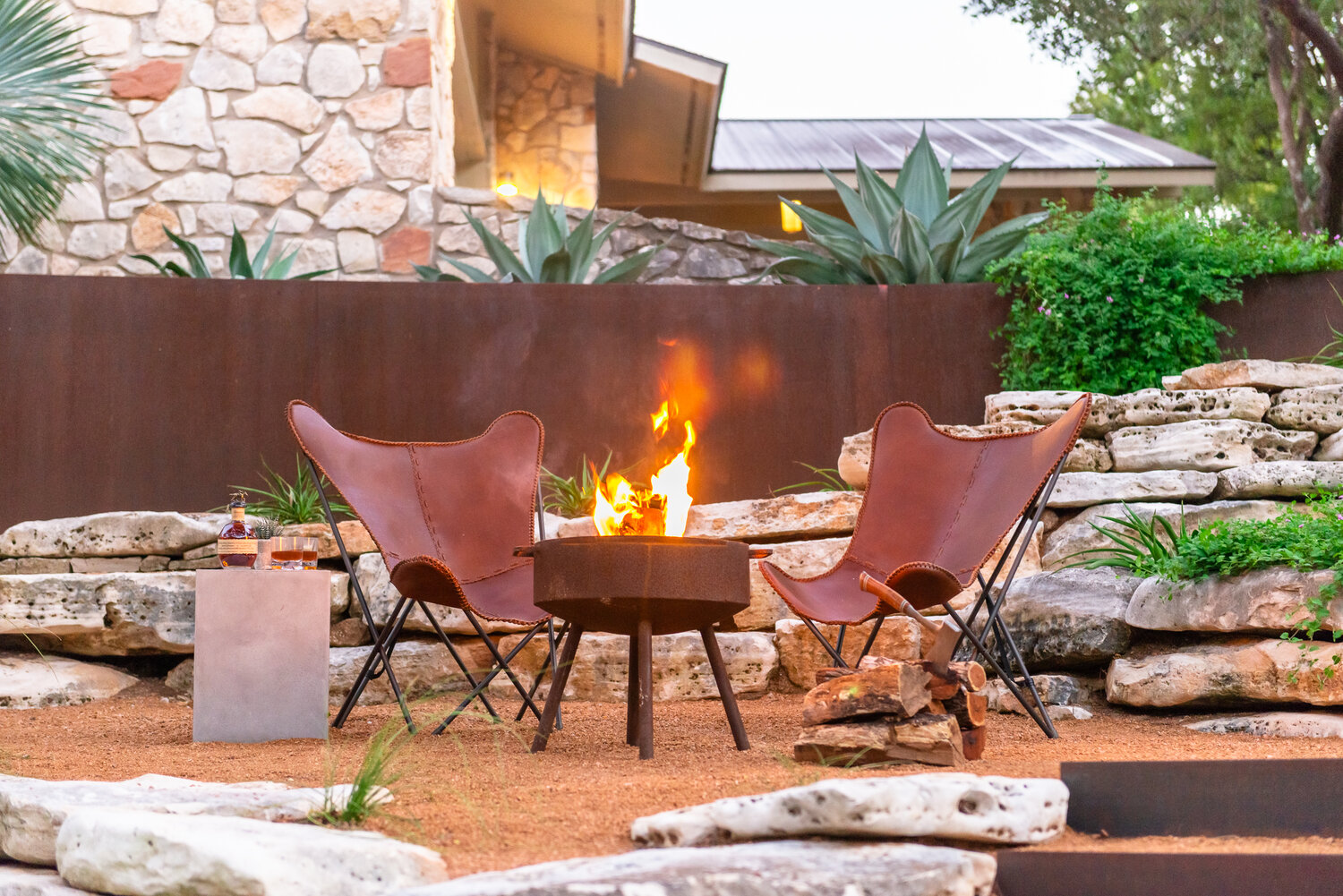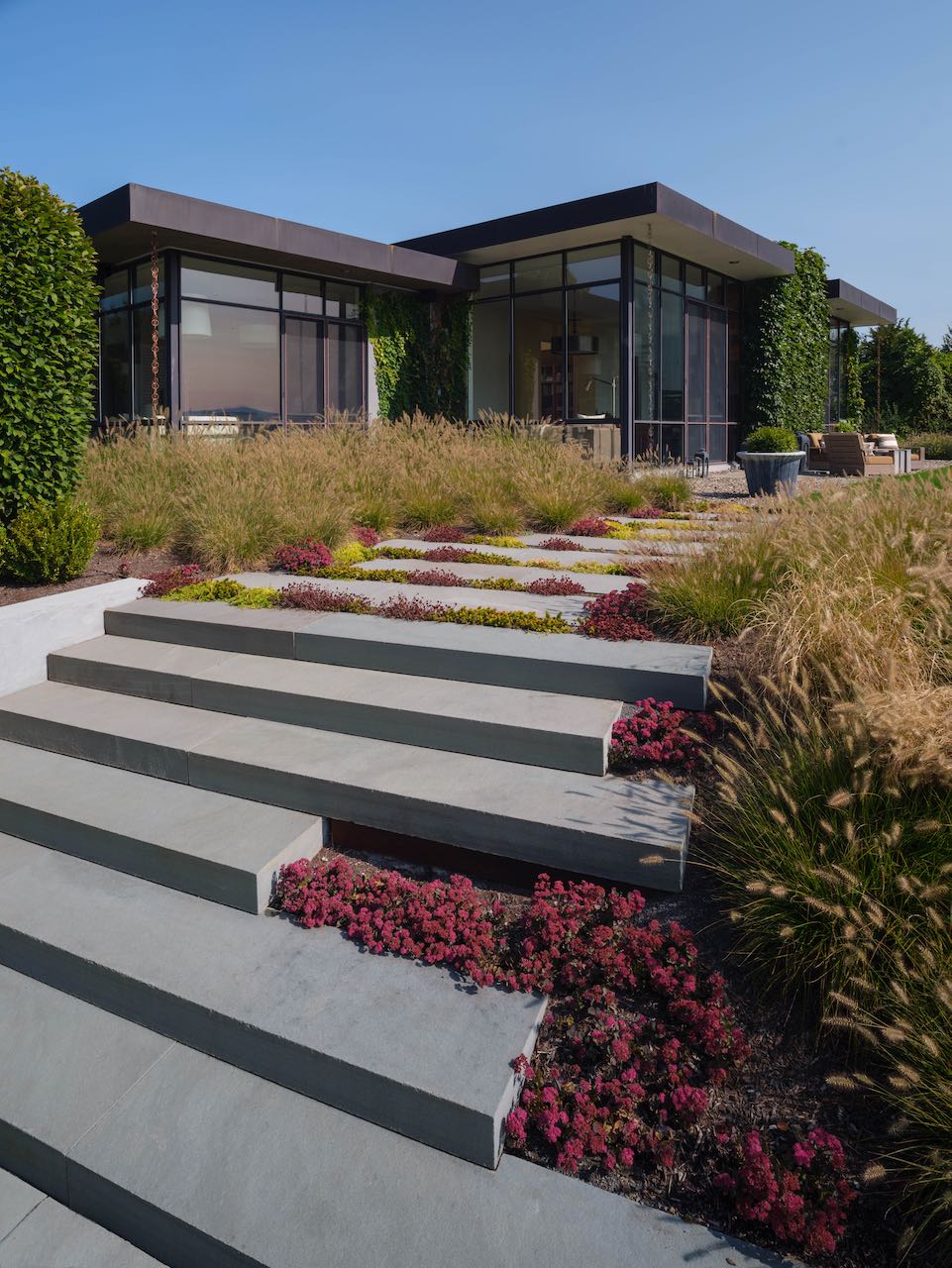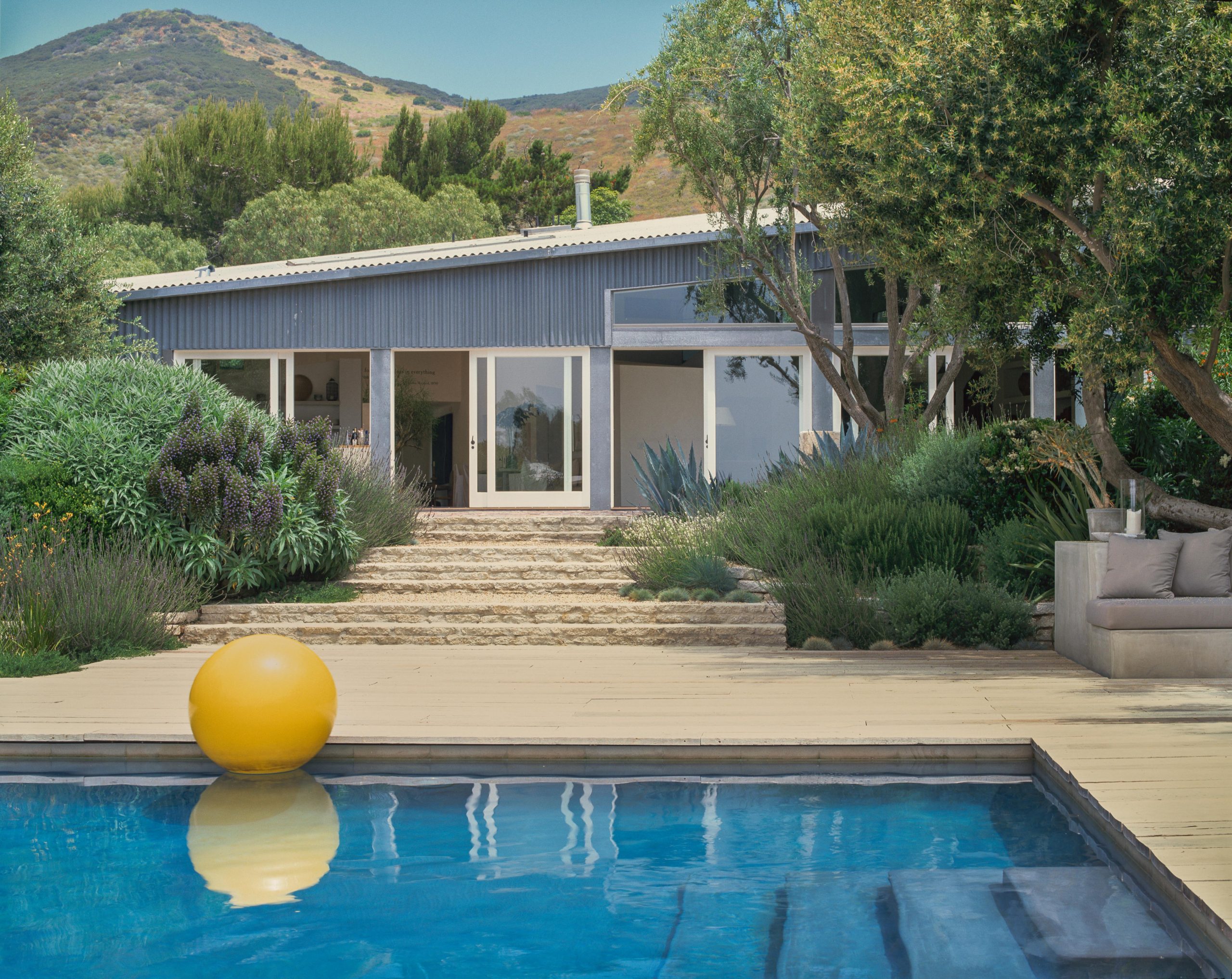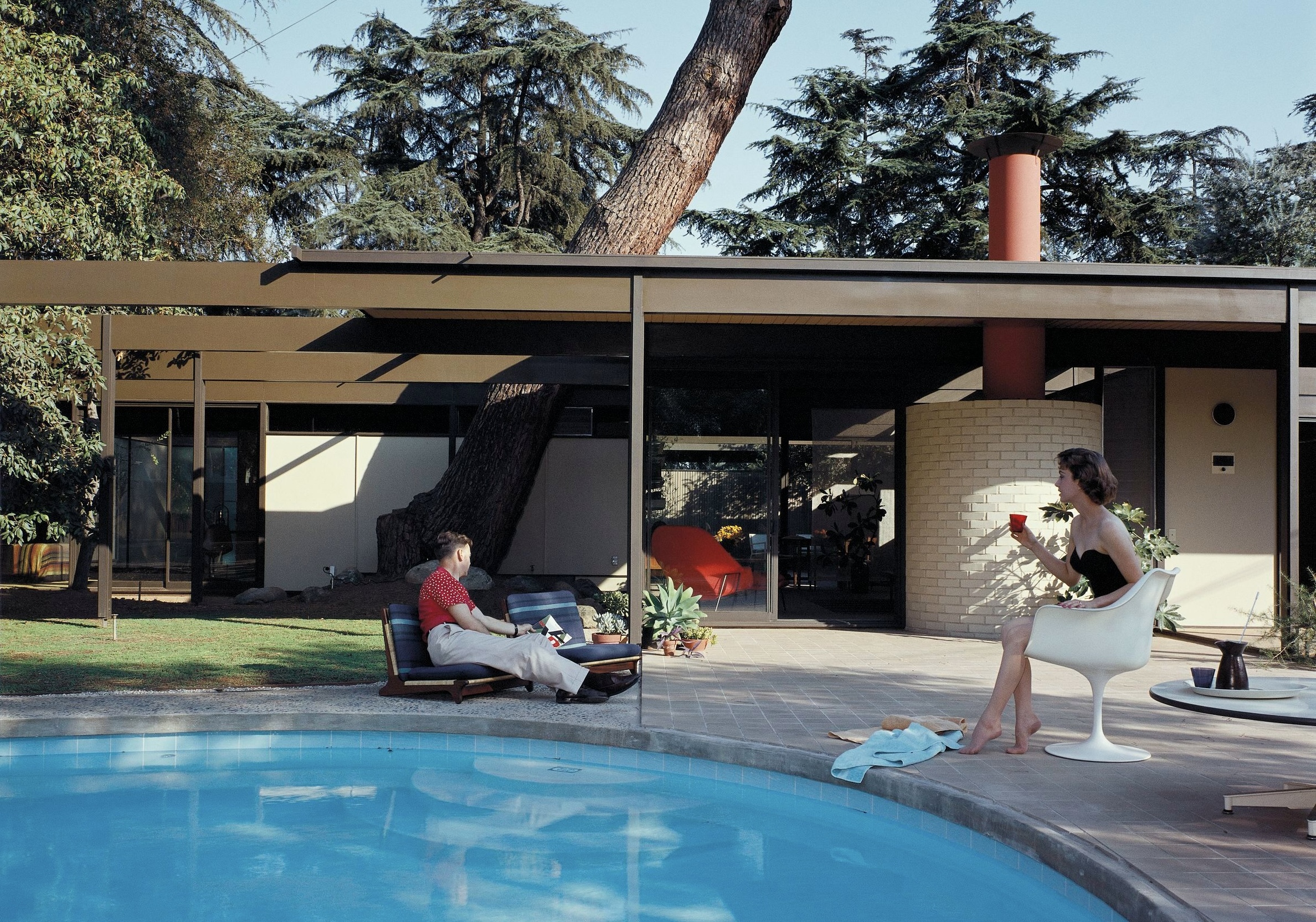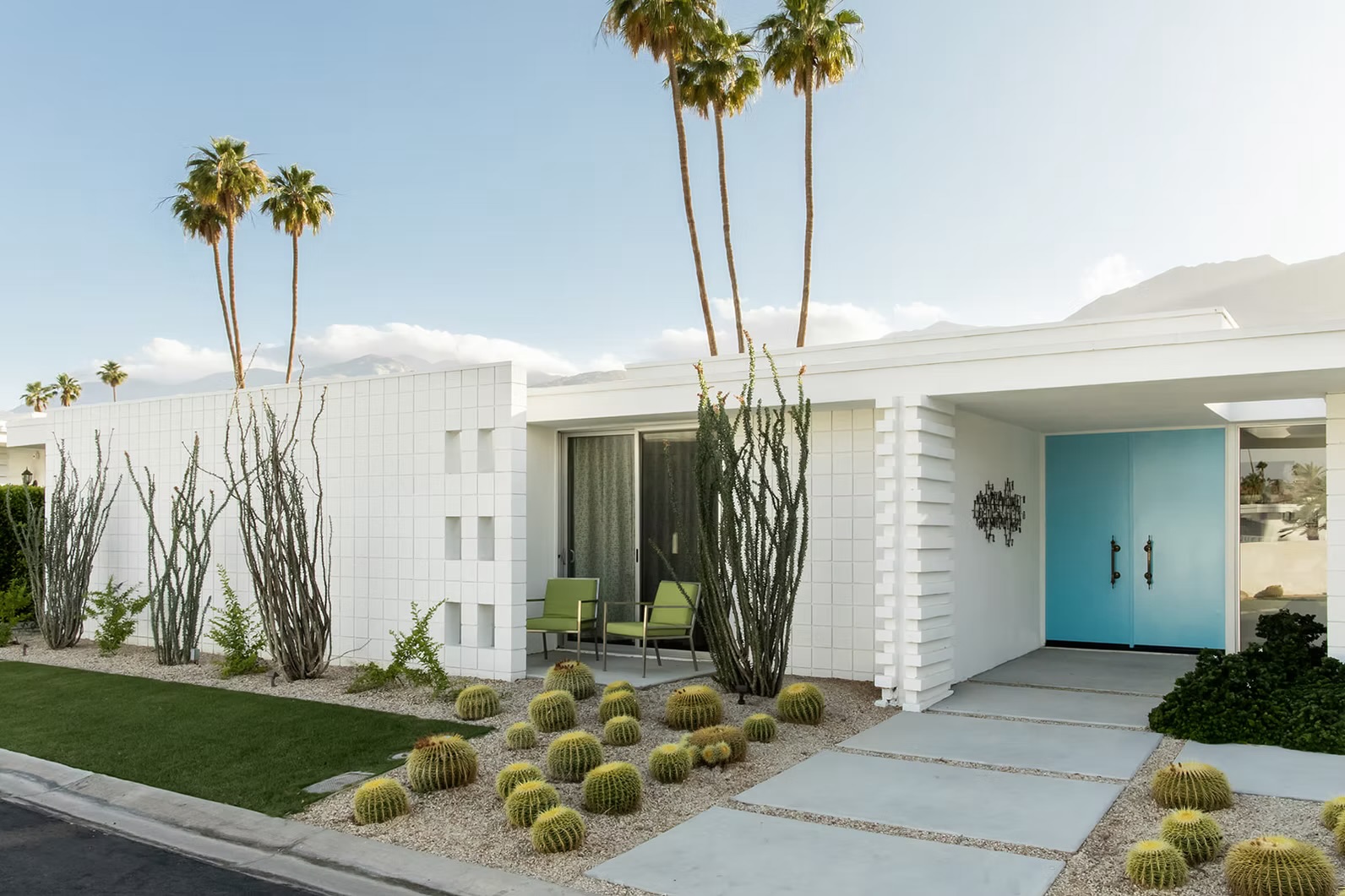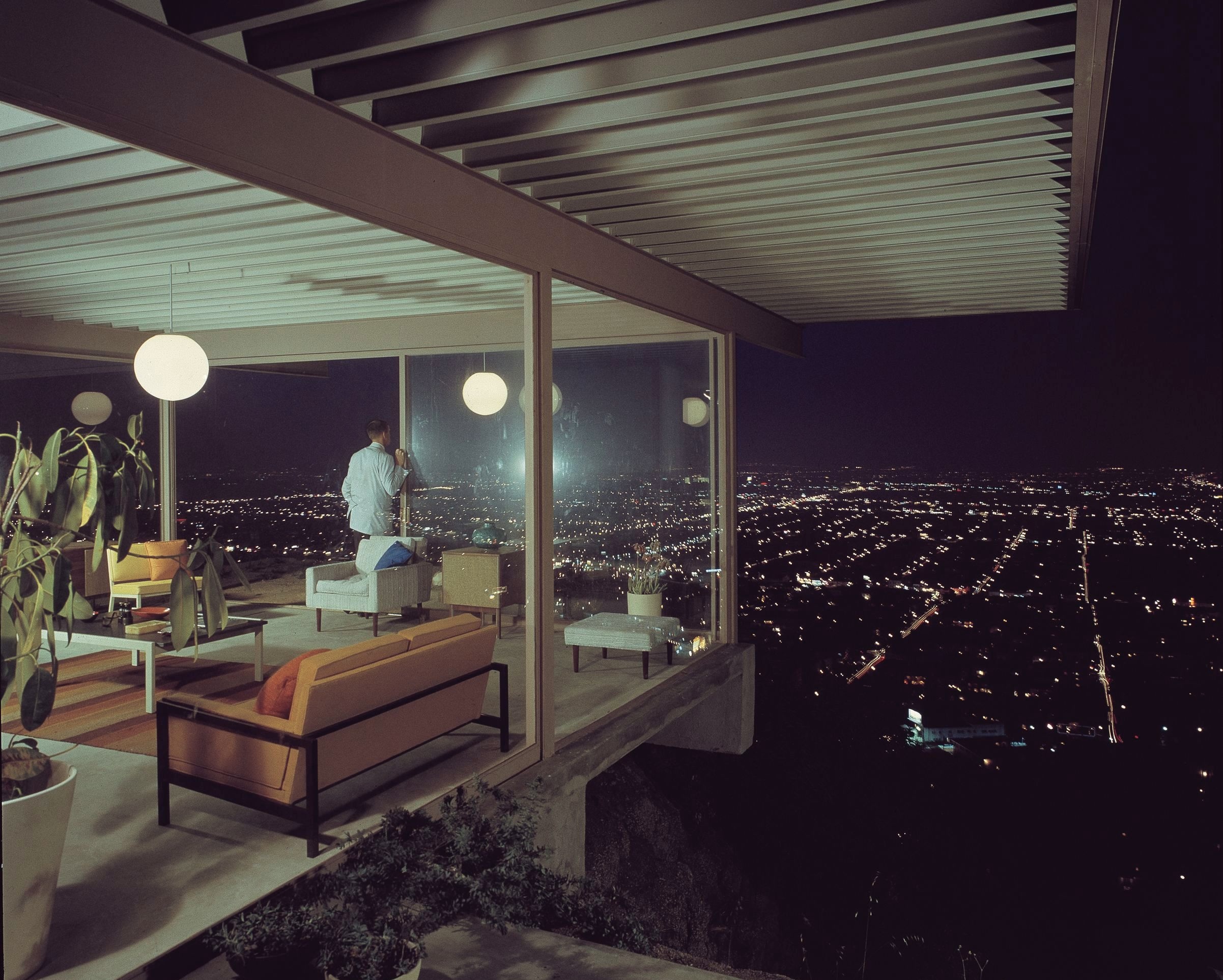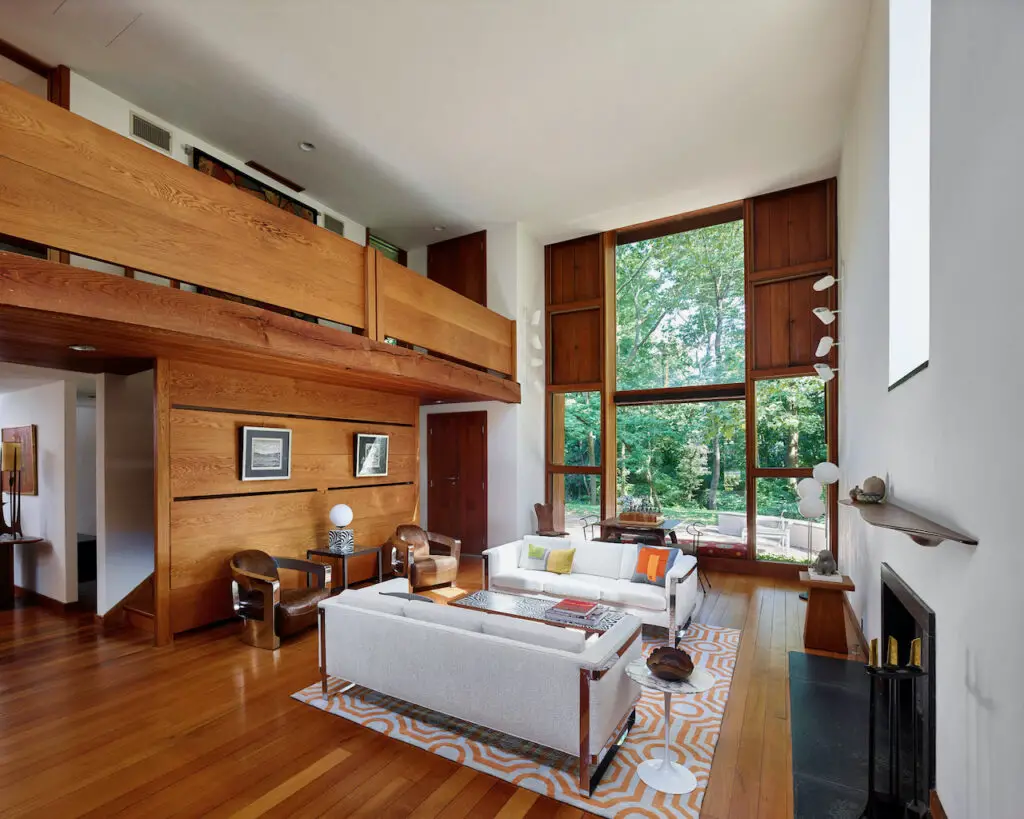
Text by k YODER design
The Margaret Esherick House, designed by Louis I. Kahn between 1959 and 1961, is one of nine private homes completed by the architect. Located in Philadelphia’s Chestnut Hill neighbourhood, the house reflects Kahn’s principles of clarity, geometry, and materiality, with natural concrete, Apitong wood, and expansive windows that connect the interiors to the surrounding environment.
This renovated midcentury home features an original kitchen by Wharton Esherick, renowned sculptor and woodworker, which remains intact and central to its character. Recent conservation efforts led by k YODER design sought to modernise the home while preserving its architectural integrity and respecting its mid-century origins.
Updates include the restoration of the original kitchen, with non-original cabinets removed and the refrigerator returned to its original location, now clad with Esherick-designed woodwork. A stainless steel backsplash was added, complementing Kahn’s material palette.
A supplemental galley kitchen was created in a former utility room, providing modern functionality while maintaining the division of servant and served spaces. Insulation challenges were addressed with fabric-wrapped rigid panels printed with photorealistic images of the original wooden shutters, offering seasonal thermal protection without altering the historic design.
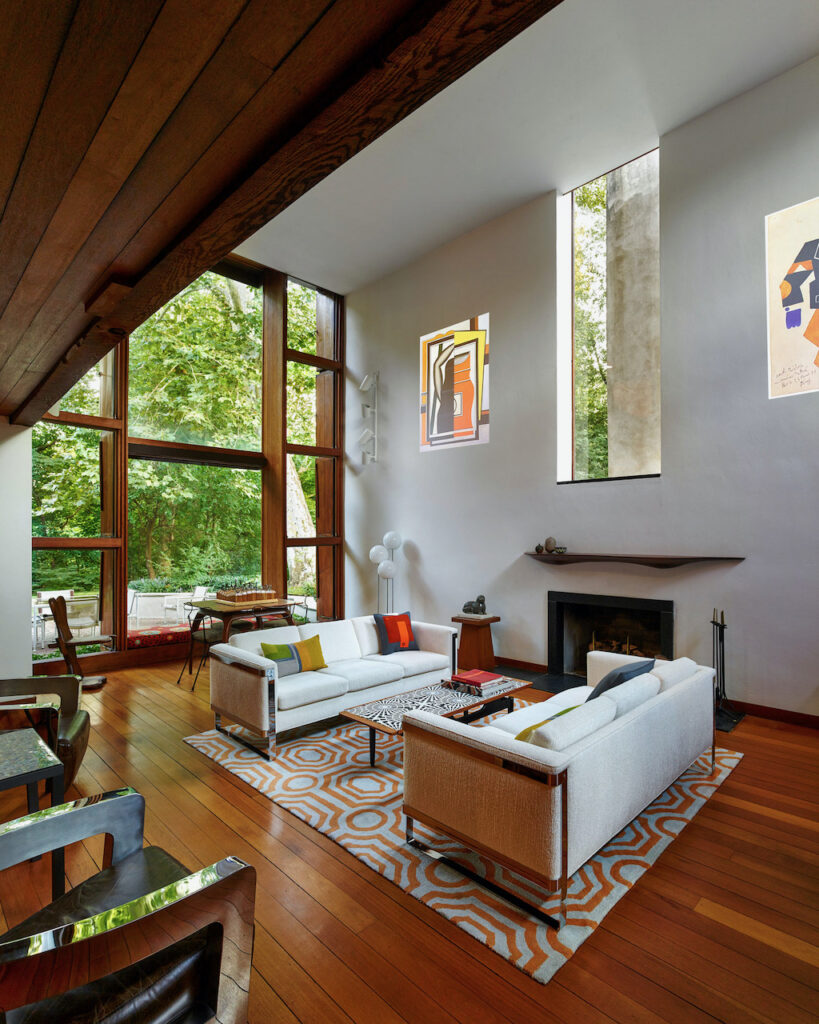
The master bathroom received updated fixtures, and a second-floor laundry room was introduced in a previously unused storage area. A concealed LED projection system was installed in the living room for art and video displays, preserving the iconic wall surfaces.
Modern interventions were designed to align with Kahn’s vision while ensuring the home remains livable for contemporary needs. The project combines architectural preservation with thoughtful updates, retaining the spirit of the original design and enhancing its functionality for the future.
The house transcends its place in time and architectural history. A program of conservation efforts, designed by Philadelphia, Pennsylvania-based architecture studio,, sought to continue the transcendence – adding amenities to ensure the home’s livability, preserve its architectural integrity, and retain its sense of form and function.
New interventions maintain the rigor of served and servant spaces, complement – rather than replicate – aesthetic details, and refine elements not intrinsic to Kahn’s original vision.
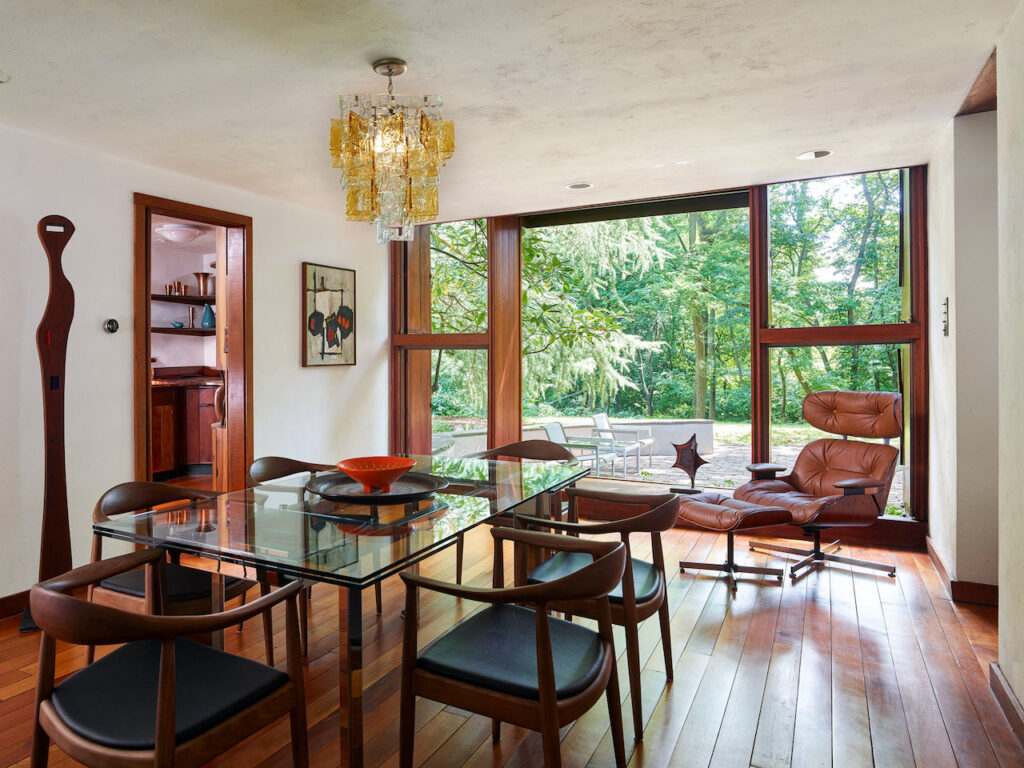
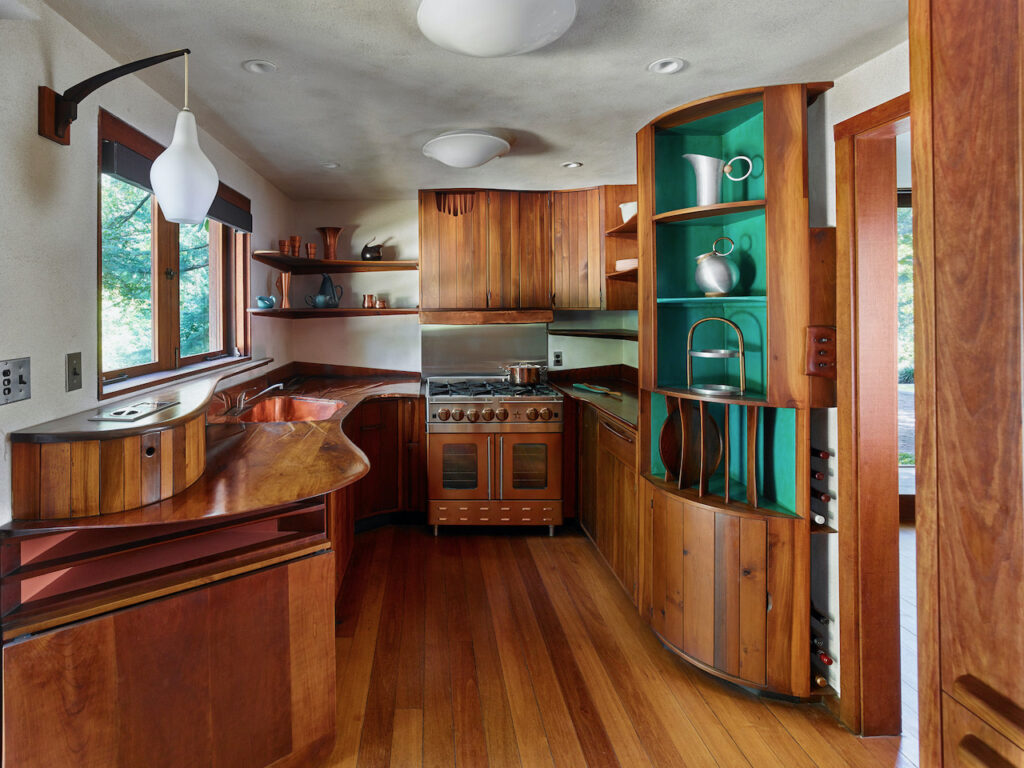
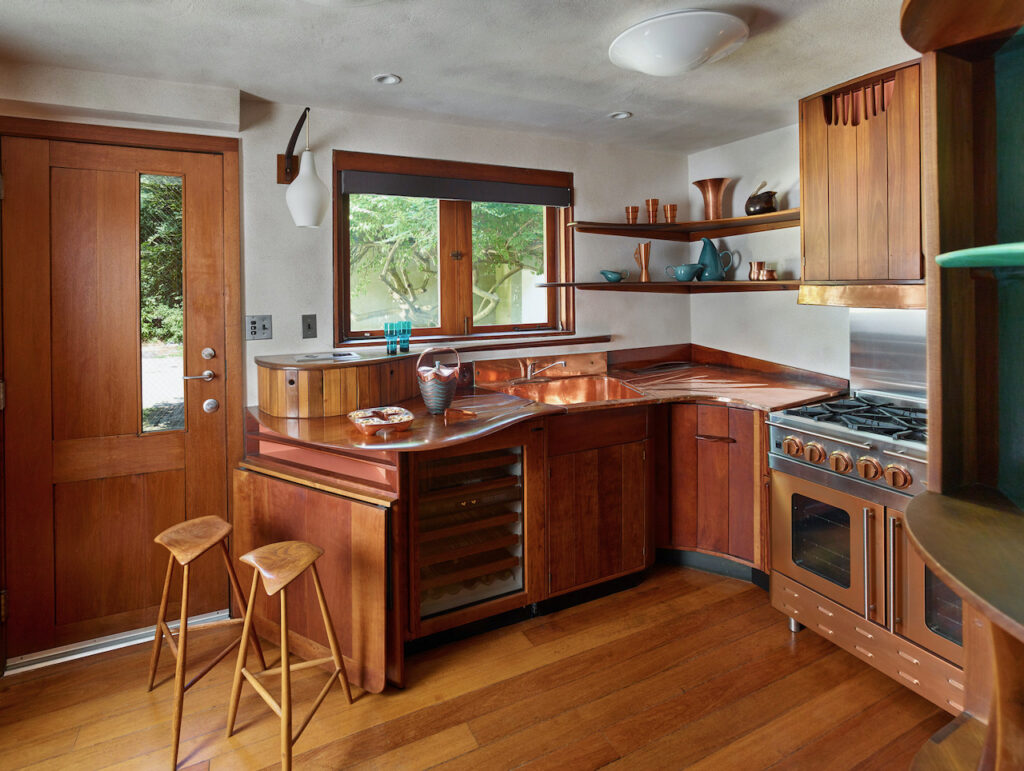
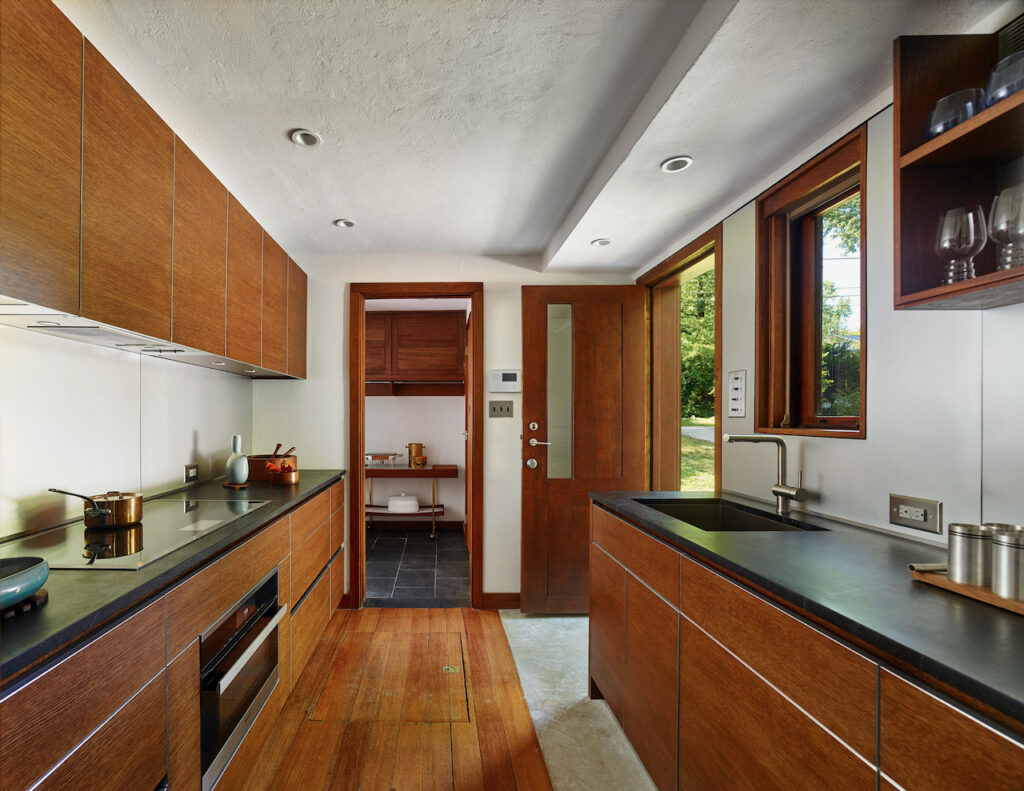
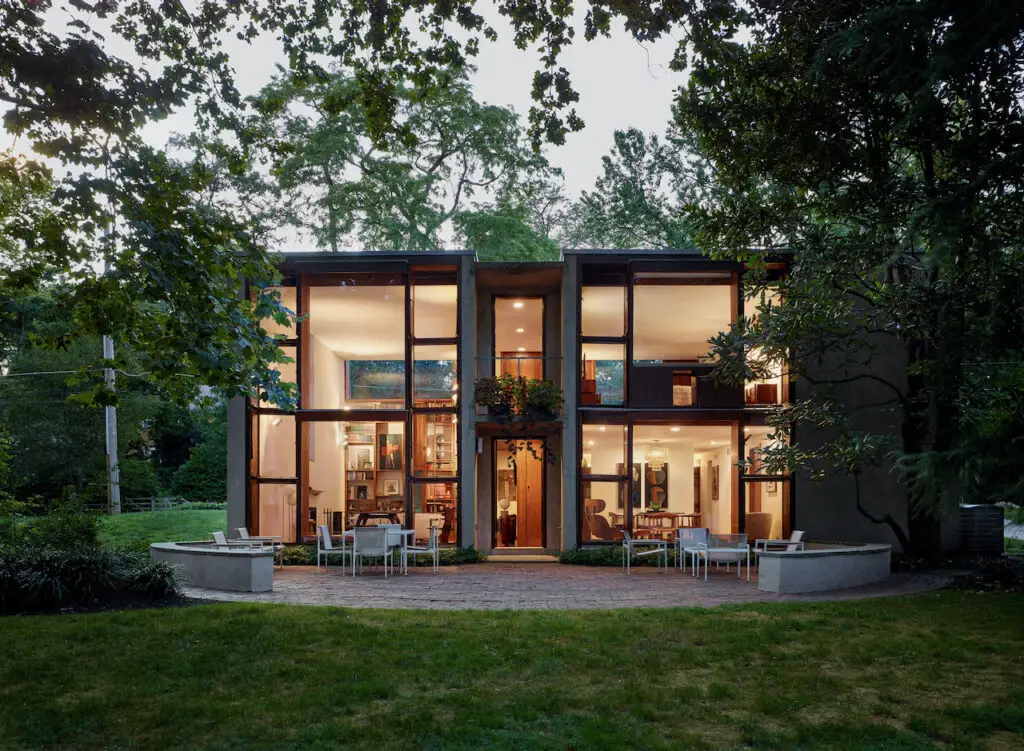
Photos by Jefrrey Totaro




